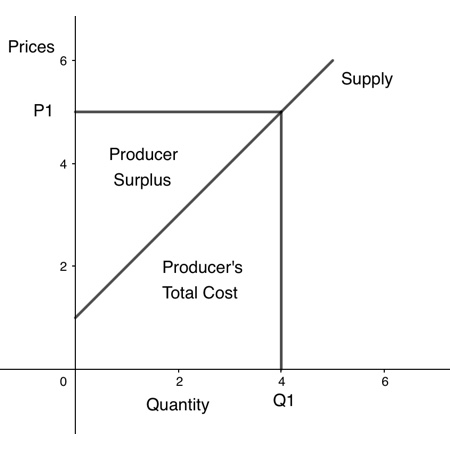Smart Ways to Create a SharePoint Site in 2025: Discover Efficient Tips
Creating a SharePoint site in 2025 is not just about setting up a platform; it’s about leveraging cutting-edge tools and strategies that enhance collaboration, communication, and overall efficiency. With the continual evolution of SharePoint Online and Foundation, understanding how to create a SharePoint site effectively is crucial. In this comprehensive guide, we will explore various facets of SharePoint site setup, customization, and management, providing practical tips along the way.
Benefits of mastering SharePoint include streamlined workflows, improved document management, and enhanced team collaboration. This article will cover the best practices for SharePoint site features, templates, permissions, and more, ensuring your teams can work efficiently and effectively. Key takeaways will highlight actionable insights to elevate your SharePoint experience.
Complete Guide to SharePoint Site Setup in 2025
Setting up a SharePoint site involves several essential steps aimed at configuring the platform to meet organizational needs and project requirements. Begin with understanding the different types of SharePoint site collections you may require. Whether it’s a communication site for broader team engagement or a team site for specific project management, the setup directly influences site functionality.
Understanding SharePoint Site Types
Recognizing the differences between SharePoint sites is crucial. A communication site is ideal for sharing information with a large audience, while team sites focus on collaboration among project members. Each site serves unique purposes but can also integrate seamlessly when structured effectively. For instance, connecting team sites with a communication site fosters better visibility of project outcomes and directives.
Establishing SharePoint Site Permissions
Setting appropriate SharePoint site permissions is vital for security and collaboration. Determine user roles based on their responsibilities. SharePoint provides several predefined permission levels, allowing customization of access to sensitive content. Granting view, edit, or full control permissions ensures that users can perform their duties without compromising data integrity.
Creating and Customizing SharePoint Site Templates
Utilizing SharePoint site templates allows for a quicker setup process. Choose from built-in templates that align with industry standards or develop custom templates that reflect your organization's branding and workflow needs. Customization options, including adding logos and modifying layouts, enable brands to maintain a consistent identity across their SharePoint sites.
Effective Strategies for SharePoint Site Customization
Once your baseline site setup is complete, moving to SharePoint site customization allows for tailored experiences suited to user needs. Creating a user-friendly site requires thoughtful consideration of design principles and functional features that enhance navigation and usability.
Enhancing SharePoint Site Navigation
SharePoint site navigation must be intuitive. Implementing a logical hierarchy in site pages and ensuring easy access to important sections, such as document libraries and task lists, significantly contributes to user satisfaction. Use the Quick Launch and the command bar effectively to facilitate seamless exploration across your site.
Utilizing SharePoint Site Web Parts
Web parts are essential elements that allow you to display various types of content on your SharePoint site. Utilizing SharePoint site web parts like document libraries, lists, and calendars helps provide dynamic content that users find valuable. Customizing these web parts improves interaction and keeps the relevant information front and center for your team.
Optimizing SharePoint Site Performance
Maintaining high performance on your SharePoint site is crucial for productivity. Regularly review site analytics and usage reports to identify areas for improvement. Effective SharePoint site management includes updating site content, streamlining data storage, and ensuring that libraries and lists are organized efficiently. You may also consider removing unused or outdated elements to enhance loading times.
Advanced Features for SharePoint Site Management
As you grow comfortable with the basics of SharePoint, exploring advanced features can greatly enhance your site’s functionality. Features such as document management and integration with other platforms can create powerful workflows that save time and minimize errors.
Integrating SharePoint with Business Tools
Integrating SharePoint site features with tools like Microsoft Teams and Outlook creates a cohesive work environment. These integrations allow for real-time collaboration and communication, making your SharePoint site the central hub for project management activities. Streamlining workflows through automated processes boosts organizational efficiency.
Implementing SharePoint Site Workflow Automation
SharePoint site workflow automation can significantly reduce manual task handling. Utilize tools such as Power Automate to create automated workflows that manage document approvals or notifications, ensuring timely actions without requiring manual intervention. This not only saves time but also minimizes the risk of errors.
Ensuring Security and Compliance in SharePoint Sites
The integrity of your data is paramount. When crafting your SharePoint site, implementing security measures and compliance protocols should be a top priority. This ensures that team members can collaborate freely without risking sensitive information.
Setting Up SharePoint Site Security
Establishing strong SharePoint site security involves employing access controls, permissions management, and external sharing policies. Regular audits of access control settings are essential to mitigate risks and ensure compliance with governmental or organizational policies.
Managing SharePoint Site Compliance
Addressing compliance within your SharePoint site often means setting up guidelines for information access and data management. Incorporating compliance features helps ensure that all necessary regulations—such as GDPR or HIPAA—are adhered to, thereby protecting your organization from legal repercussions.
Q&A Section about SharePoint Site Best Practices
What are the best practices for SharePoint site organization?
To effectively organize your SharePoint site, establish a clear structure that separates different teams, projects, or functions. Use site metadata to categorize content, making it easier for users to find what they need. Regularly review and update content to keep information current.
How can I improve SharePoint site user onboarding?
Enhancing user onboarding can involve creating tutorials or guides that explain the site structure and key features. Offering training sessions and resources via the site itself can also facilitate smoother acclimatization for new users.
What strategies can optimize SharePoint for mobile access?
To ensure effective SharePoint mobile access, prioritize responsive design aspects and simplify navigation. Testing the site on various devices will help identify areas of improvement for the mobile user experience.
```